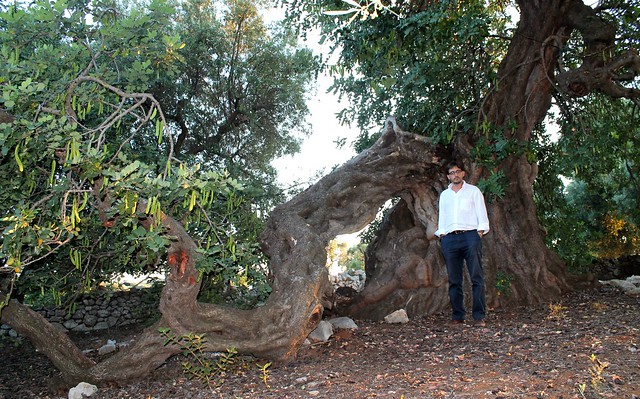
La Grave Carob Tree
This post is also available in:
 Italiano (Italian)
Italiano (Italian)
Puglia is known for its natural beauties and the symbol of this land are its centuries-old olive groves for sure. Nonetheless, some important but forgotten trees (most of them have dramatically disappeared) are still part of the priceless natural heritage of this Italian region. One of them is the carob, a tree with a massive trunk and lush foliage with peculiar edible fruits. In the past, the latter used to be acknowledged as a true delicacy especially by the children.
In La Grave, near Polignano a Mare, there is a majestic carob tree considered the very ancestor of the species in the whole territory. Unfortunately, about twenty years ago one of its main branches split and this changed its structure; despite the damage, the beautiful tree still goes on vegetating.
Ceratonia siliqua
Botanical Card:
The carob is a long-lived, slow-growing tree, known since ancient times; it prefers bright and sunny environments, high temperatures and can live on any type of soil, both near coastal areas and up to about 1.312 ft above sea level. It is a heliophilic and xerophilous plant, quite undemanding, which also grows on dry and rocky soils.
Distribution:
Native to the south-eastern regions of Europe and the Middle East, it can be found along the coasts of the entire Mediterranean Basin.
Importance and use:
The cultivation of carob was already known by the ancient Romans who appreciated it a lot.
This species often grows along with olive trees, forming remarkable groves. During many re-forestation projects, it was used in association with Aleppo pines, especially in the coastal areas.
Its wood is hard and resistant, which makes it appreciated in carpentry, even if it may easily rot once exposed to water. Its flowers attract bees, therefore carob cultivation areas often include beekeeping facilities as well.
It is an excellent antidiarrheal remedy (Arobon, a powder made with carob beans, has been long used in paediatrics), also used for its restoring and remineralizing qualities.
For centuries, carob beans have fed the peoples of North Africa even if, after the arrival of some prosperity, they were then mainly used as animal fodder.
Carob bean powder, flavoured with chocolate, is also used in the bakeries and to make desserts and biscuits.
The lenticular seeds, called “carats” (thanks to their constant weight), were used in the past to weigh gold and precious stones – hence their peculiar name.
Photo source: www.polignanoweb.it
This post is also available in:
 Italiano (Italian)
Italiano (Italian)
Contatti
Contrata La Grave - 70044 Polignano a Mare(BA)
